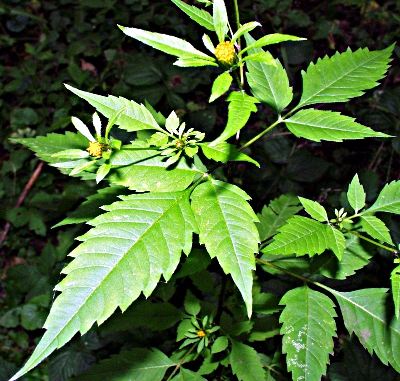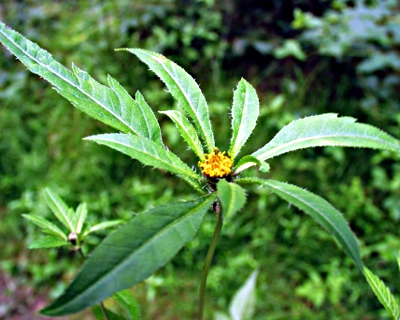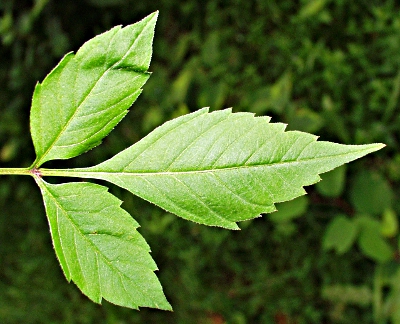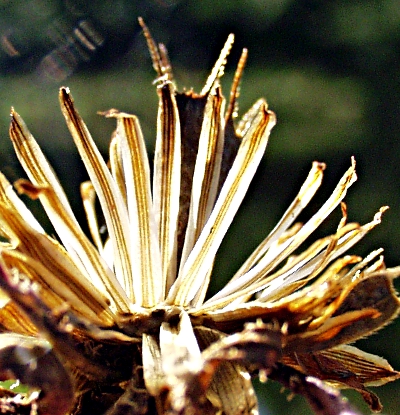Devil's beggarticks |




Habit,
flower, leaf, chaffy leaves and fruit of the
Devil's
beggarticks
| Bidens frondosus L.: | |
| Blooming period: | August–September |
| Height: | 20–120 cm, at most 250 cm |
| Flowers: | in heads, Ø of the heads 8–10 mm, stamens: 5, styles: 1 |
| Ray florets: | mostly missing |
| Disc florets: | yellow |
| Calyx: | transformed into 2 awns |
| Stem leaves: | opposite, three-pinnate |
| Basal leaves: | missing |
Plant annual, herbaceous.
Stem erect, often purplish, 4-edged, branched from the base.
Stem leaves opposite, long stalked, three-pinnate or rarely five-pinnate.
Leaflets stalked, ovate to lanceolate, base cuneate, margins dentate to serrate, sometimes ciliated, acuminate.
Flower heads on about 40 mm long, leafless stalks. The receptacle is flat.
The phyllaries are arranged in 2 rows. The phyllaries of the outer row are upright or spreading, spatulate to lanceolate, sometimes leaf-like. The inner phyllaries are small, lanceolate, pointed and with membranous margins. They form a bell-shaped or hemispherical involucre.
Occasionally a few marginal, sterile ray florets with 2–5 mm long ligules are present, which are white or yellow and arranged in a single row. Often they are lacking.
Mostly the flowers heads are composed exclusively of yellow, hermaphrodite, 2.5–5 mm long, 5-dentate, yellow disc florets, at the base with a keeled chaffy leaf which is lanceolate to lineal, 5–8 mm long, and with a broad membranous margin. The yellowish keel shows reddish to brown stripes.
After self-pollination an approximately 6–10 mm long nut fruit (achene) is formed, that is flattened, wedge-shaped and black, sometimes with bristles and usually with 2 awns. Plants very diversiform!
| Floral formula mostly: |
| * K=awns [C(5) A5(connate)] G(2) inferior |
Occurrence:
On
banks of rivers, ditches, lakes and ponds. Prefers warm, slightly
alkaline, moist to wet and very nitrogen-rich locations.
Distribution:
Originally
North America, introduced in Europe.